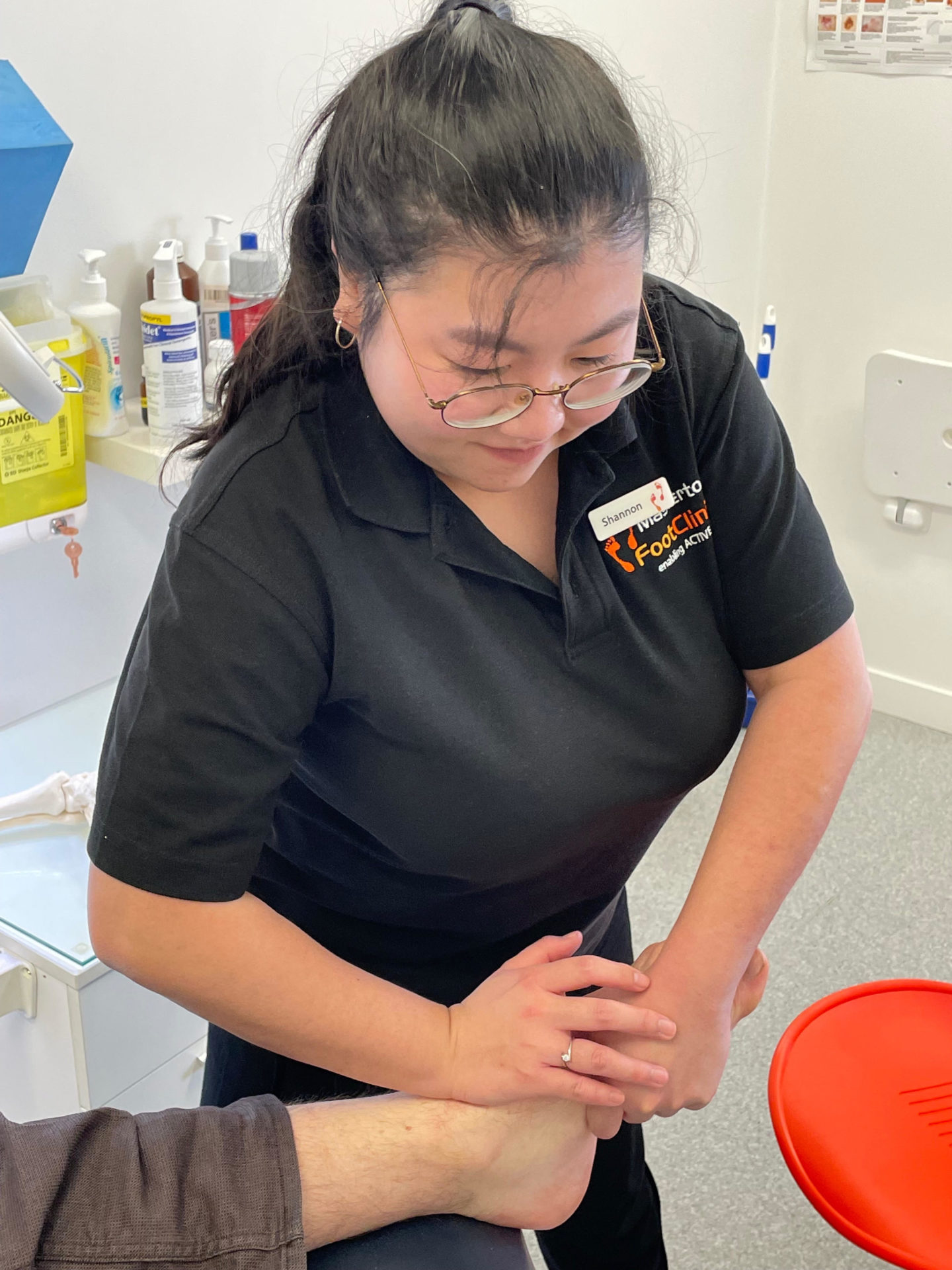
02 Feb Treating Heel Pain With Foot Mobilisation: The Results

Heel pain from plantar fasciitis is a frustrating problem experienced by hundreds of people in the Wairarapa every year. From those excruciating first steps in the morning at the bottom of the heel to that unexpected shooting pain when you stand up after having a rest. Perhaps the greatest frustration is that unlike other parts of the body where you can make a substantial effort to avoid using while it recovers, you can’t help but engage your plantar fascia when you walk – even if you try limping on your tiptoes. And the more it’s engaged without the right care, the longer the pain continues to linger…
If this sounds familiar, then this is for you. Since last year, our podiatrists have been using a treatment called foot mobilisation to help feet with plantar fasciitis heal and repair. We (and our patients) love it because of its ability to relieve pain without medication, needles or surgery. Here’s what foot mobilisation is, how we use it, and some recent results from a study about how effective foot mobilisation is for heel pain.
What Is Foot Mobilisation?
Foot mobilisation uses purposeful hands-on movement of stiff, dysfunctional joints in the feet to help improve joint alignment, release tension and help your feet and legs function more efficiently.
Think of the body as a kinetic chain, made of overlapping segments of joints, bones, muscles, ligaments and tissues that connect in a multitude of ways and work together to produce movement. When one part of the chain is misaligned, injured or not working properly, the effects will reverberate through the chain, affecting different areas in different ways. There may be abnormal strain or poor movement across the feet and legs as a result, in varying degrees. Foot mobilisation helps to free up the joints and improve alignment to get the body back to a natural, healthy and optimal baseline, setting strong foundations.
This concept of working on the feet and legs by looking at the chain is important because often, injuries are looked at and treated in isolation. A practitioner may use a moon boot to help the plantar fascia heal and repair to a pain-free state, but won’t look at what caused the injury at a whole-body level. So, for example, if poor knee alignment was contributing to how the plantar fascia was being overused, it is possible that this injury will keep coming back because the causes haven’t been addressed at a high level. This is where foot mobilisation excels.
How Effective Is Foot Mobilisation For Treating Heel Pain?
In our clinic, with our podiatrists who have undergone additional training to become qualified in foot mobilisation, this treatment is a staple in our approach to heel pain – and with fantastic results. Following our proven process for heel pain, which involves multiple sessions of foot mobilisation therapy alongside other treatments, we estimate that 90% of patients make a full recovery and get back to pain-free walking.
Studies back the effectiveness of foot mobilisation, with a recent randomised control study showing that even as a standalone treatment, foot mobilisation delivers statistically and clinically significant improvements in plantar fasciitis, including significantly improving that first-step pain. This confirms that restoring healthy joint movement is such an integral part of treatment and can’t be missed.
Other studies also show how foot mobilisation gets better results than even corticosteroid medications. In this study, foot mobilisation with exercise showed superior results in managing plantar fasciitis heel pain compared to therapeutic ultrasound followed by iontophoresis, which is a non-invasive method to transmit the corticosteroid dexamethasone to the heel. The results showed mobilisation to achieve better results in both the short and long term.
Here at Masterton Foot Clinic, we use foot mobilisation as one key component of a complete treatment plan, working alongside other treatments that work to actively heal injuries like shockwave treatment, or actively support and offload the injured area like orthotics. This combination finds the best results by ensuring we have all of our bases of care covered and by considering the extensive effects on the feet and legs, as opposed to looking at the heel as a standalone injured area.
What Happens During Foot Mobilisation?
Foot mobilisation therapy starts with understanding the cause of your pain or stiffness and the effects it’s having on your body. We do this via a comprehensive assessment that includes a gait assessment, where we show you what we’re seeing and what it’s telling us about your body and any compensations it is making as a result of the injury or problem. After discussing all your results, we’ll explain which joints we’re going to manipulate, how it will help, and what you can expect.
Getting started with the treatment, your qualified podiatrist (who has had additional training in foot mobilisation) will use their hands, and potentially some massage tools, to gently mobilise and manipulate your feet and joints. The hands-on time will vary depending on the severity of your stiffness and how many joints we’re targeting, but a foot mobilisation appointment generally lasts between 10 – 30 minutes.
We’ll also prescribe a home exercise program for you to help support your progress at home, in between visits. As connective scar tissue takes on average three weeks to break down and regenerate, we recommend a course of six treatments over three weeks.
Ready To Rid Your Heel Pain?
If you’re ready to finally get rid of your heel pain, regardless of how many weeks, months or years it has been lingering or returning, our experienced podiatry team is here to help. Book your appointment online or call us on 06 370 4057


